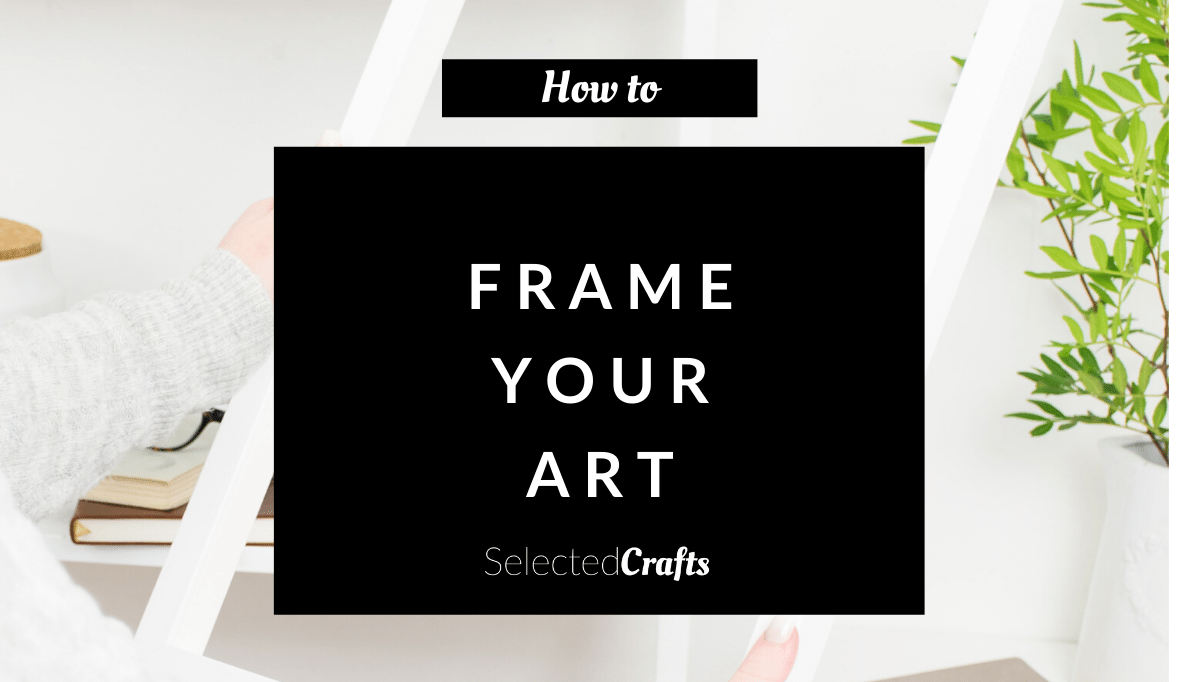There are a lot of ways to frame your art. If you are a novice art collector it can be difficult to know what framing options you have and how to choose the best frame for your artworks. In this blog post, we look at how to frame art properly.
You can find frames at your local art dealer, buy frames online or shop second hand. You could even make DIY frames. Hopefully, you can find a framing option that suits you.
In this blog post we look at how to choose the right frame:
- Type
- Style
- Size
- Position
Choose the correct frame type
When I talk about a frame type, I refer to the structure of the frame.
There are endless options when choosing materials and styling for a frame but in general, there are few groups of frames:
– With a border and covered with glass
– Without a border not covered with glass
– With two sides of glass, transparent frames.
– Open frames without glass
– Digital frames
– Poster Hangers
Whichever frame type you choose you should always aim for the same thing, to frame your art for a lifetime. This can be tricky because not all types of art require the same kind of protection.
For example, the best way to protect drawings and watercolors is by framing them in a frame where it is covered by glass or acrylic. This will protect it from wear and tear and prolong the lifespan of the artwork. Both glass and acrylic protect the art from dust and dirt, but some acrylic covered frames also have built-in UV-protection.
Other kinds of art like oil and acrylic is usually sturdy and don’t require any extra protection. They can actually get damaged by being squeezed into a covered frame. These art types it is better off in an open frame that simply complements the art. Most paintings are painted on standard-sized canvases which makes it easy to find frames for them. Please keep in mind that oil and acrylic paintings require occasional maintenance. You should dust your paintings gently with a feather duster, never clean a painting.
Frames can be very expensive and not everyone has the budget to invest in brand new frames for every artwork in their home. Luckily there are many other options to consider like buying frames second hand or DIY’ing your frames.
It is also very likely that you prefer to display your art in a certain way. Maybe that’s without a frame altogether. That is fine! As long as you remember that the way you frame your art effects the lifespan of your artworks.
Choosing a frame a style
There are not of different styles of frames, from covered in gold antiques to wood and metal. You can have frames that are just a transparent glass cover, frames that have sculptural or decorative features or very minimal frames. Which style you go for is entirely based on your preferences.
A ground rule is to choose a frame based on the artwork and not the other way around. You want to find a frame that provides a decent amount of contrast, without overpowering or blending into the artwork. When settling for colors or materials for your frame, a piece of general advice is to choose something that ties the artwork to the rest of your home decor.
I would never recommend separating old collectors painting from its original frame because it would significantly lower the value of the piece. But with that said, there is nothing that says that you can’t combine a certain motif or technique with a frame in clashing color or material. This usually only creates intrigue. Another tip for creating intrigue is to go for a frame in an unusual shape like for example round or triangular. You don’t see that type of frames all too often but they are beautiful features in gallery walls for example.
Choosing the right frame size
The most common scenario is that you order a frame in the same size as your artwork. But this doesn’t have to be the case. You can absolutely go for a frame that is bigger than the actual artwork. Then you would usually use a frame with a white or black mounting board, but there are no rules.
Other oversized options include black boxes who are usually deeper than regular frames to display items such as sculptures, medals or memorabilia. Transparent frames or frames with both a glas front and back have become very popular to display both art, photographs and dried flowers.
Going for a larger frame is actually a really handy design hack. Especially if you have fallen in love with a small art piece. The size of the frame will help to give the art more impact by drawing the eye to the artwork.
For certain artworks, you might want to use a cardboard mount or edge around your art. This creates creating contrasting trim that highlights your art. This is a very common way to display art and the cardboard pieces called Passepartout.
You can also use a method called floating, that is when you attach a cardboard or foam spacer behind your artwork. This creates some depth between the mount of the frame and the artwork, that 3D effect is called floating. This effect can also be achieved if you hang a transparent glas frame directly on a wall, which makes it look like there if floating off the wall.
But in most cases you want you to be careful to choose a frame in the same size as your art. For example with poster hangers, it is very important that you get the size right. Otherwise, the art might look very misplaced.
How to position your art
The first thing when positioning your art is the size, usually smaller artworks, and photographs can be placed on tabletops, but it usually makes sense to place larger artworks on the floor or on the wall.
There are a lot of things to think of when you position your art. From a preservation point of view, there are a few things to consider. You should avoid direct sunlight, avoid other light sources, and never put your artwork in a damp place. All artworks will be damaged by sunlight over time so if it is possible it is wise to use an acrylic frame that protects from UV-Light. If you want to add additional lighting to your art, you should consider LED lights because they have the least impact on your art. Placing art in damp places is a risk. I personally have art in my bathroom for example, but I use covered frames and space is very well ventilated.
Another part of art positioning is simply how to make it look good in your home. I gathered some ideas that will help you get great results.
Here are my best tips on hanging art:
- Get your measurements of the frame and space right from the start.
- The art should feel like it is the right size for your space.
- Hang your art at eye level and around 60 inches or 150 cm from the floor.
- If your art hangs above furniture, the width of the art should cover at least 2/3 of the furniture.
- Hang art above furniture at a minimum of 12 inches 20 cm.
- Use a paper template in the size of your artwork, to mark out where the nail or hook should go. Then you mark it out on the paper template first and then and put the nail straight through it. Remove the paper afterward.
- If you are hanging multiple artworks, cut out paper templates and try out your composition on the wall. It will give you a better idea of how the finished result will look before you start hanging your art.
- If you are hanging multiple artworks, the space between frames should be no more then 3 inches or 8 cm apart. Rather hang frames to close than too far.
If you want to learn how to build a gallery wall, check out my FREE ebook with a step-by-step guide and a gallery wall planner!

If you are struggling to find art for a specific space in your home? Then check out this blog post on how to choose art for every room in your house.
Maybe you think that it seems like to much fuzz to invest in artwork and frames. Then check out this blog post to see if a digital art frame is a better option for you!
Let me know if you found this blog post useful in the comments below! It helps me to know what I should write about in the future.
Make sure to join my awesome newsletter and get updated when I create more juicy content like this!



